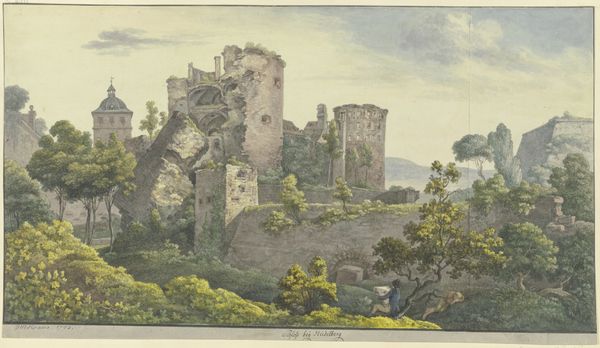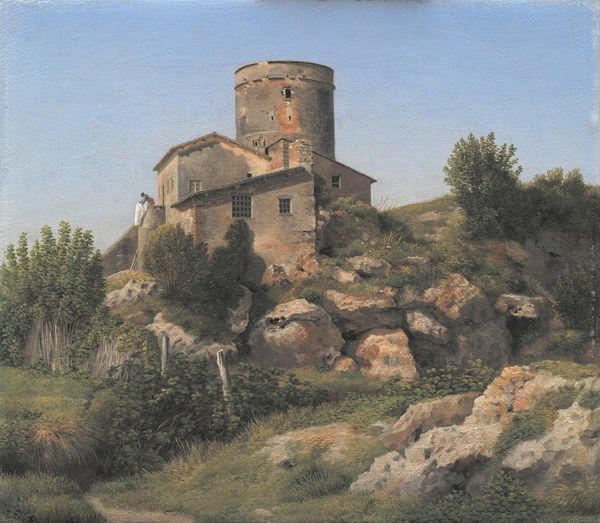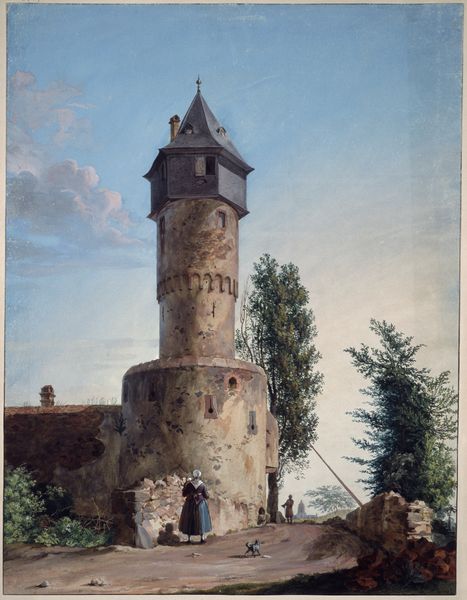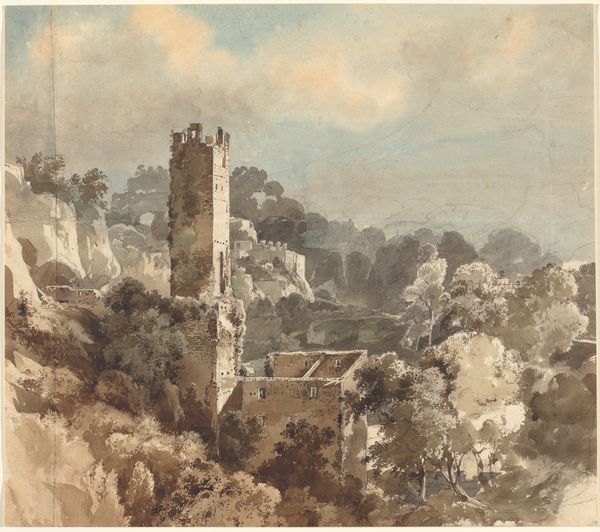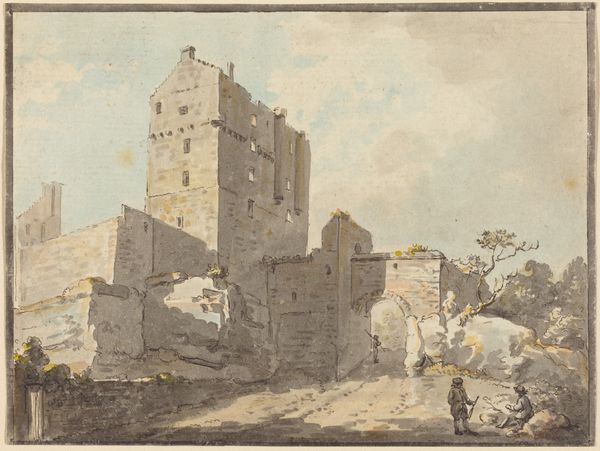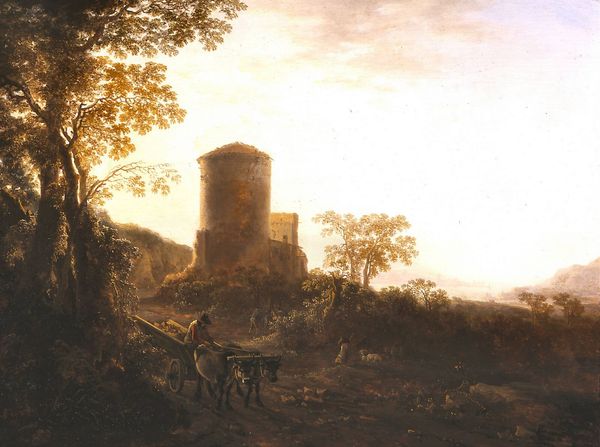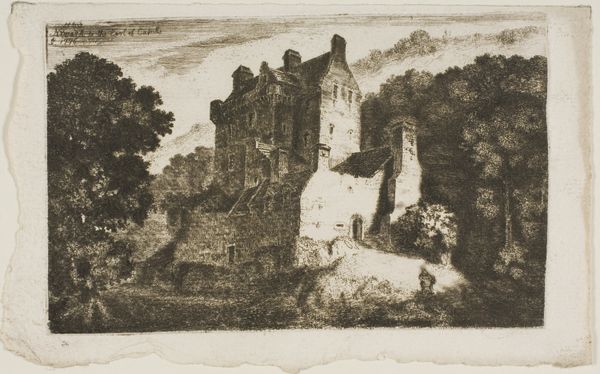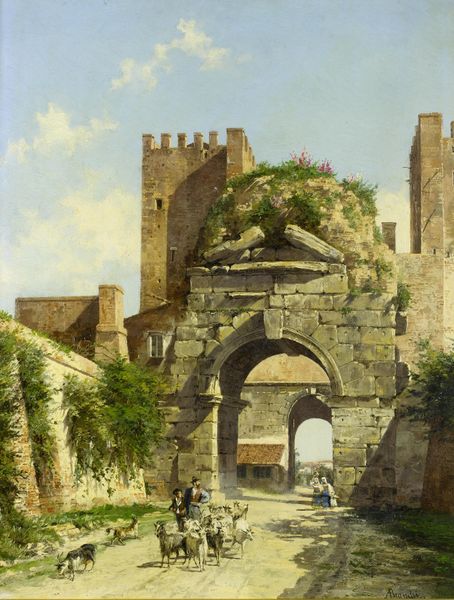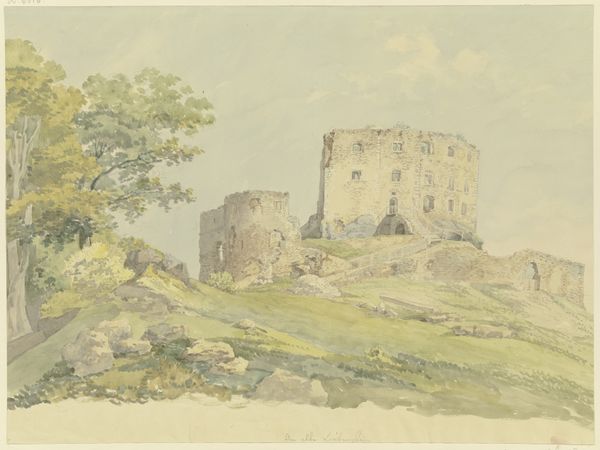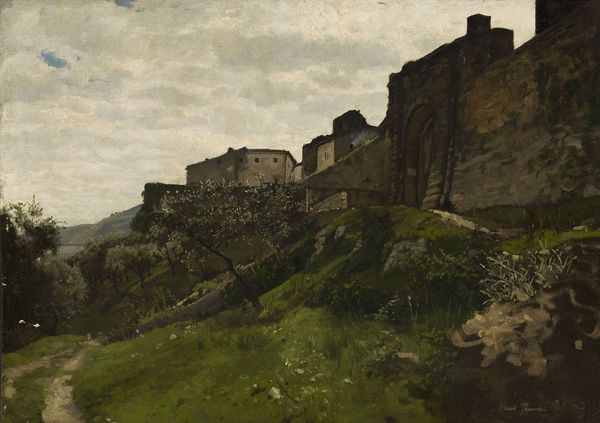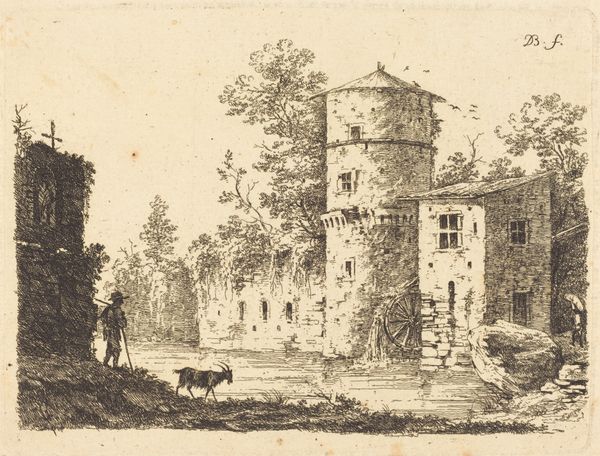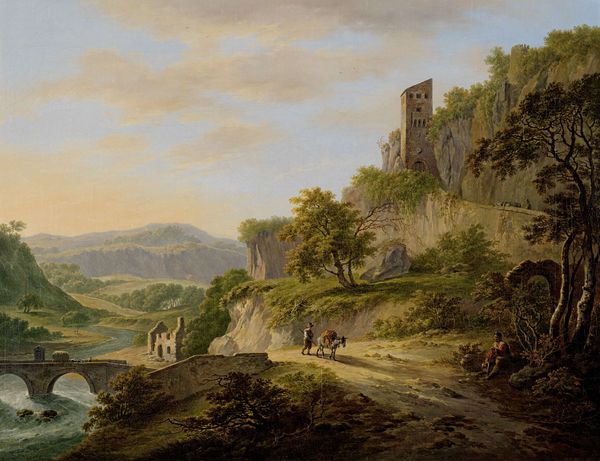
oil-paint
#
oil-paint
#
landscape
#
oil painting
#
romanticism
#
history-painting
#
mixed media
#
realism
Copyright: Public Domain: Artvee
Curator: Let’s turn our attention to "Landscape with Ruins," an oil painting dating back to about 1838, by Wilhelm Marstrand. Editor: What strikes me first is the painting's elegiac mood. It feels steeped in the romance of decay, a testament to time’s relentless passage. The somber color palette certainly enhances this feeling. Curator: Indeed. Notice how Marstrand orchestrates the composition with a meticulous eye. The verticality of the tower contrasts so elegantly with the horizontal stretch of the landscape, creating a powerful visual tension. The brushstrokes appear loose, capturing a sense of immediacy and atmosphere, yet never losing control of form. Editor: And aren't we also invited to consider the implications of "ruin"? It’s never merely about aesthetics. It's about history erased, power structures dismantled, and the environment reclaiming what was once dominated. Who inhabited this place? What caused its decline? The landscape breathes stories of silenced people. Curator: The semiotic weight is considerable. The ruins serve as both object and signifier—the tower, the foliage reclaiming its space…Marstrand carefully depicts these visual elements as an invitation to explore a dialogue about impermanence. Editor: It’s that reclaiming I find powerful. Even in decay, there’s resilience. The natural world doesn’t mourn lost empires, it simply persists. That makes me question what legacies are actually worth preserving, and who truly benefits. Curator: Interesting point. If we closely examine Marstrand's brushwork near the windows, for instance, we will discern subtle gradations, a keen study of how light interacts with fractured stone. There's even a play between warm and cool hues to amplify depth and volume. Editor: I’m wondering about Marstrand's intentions in portraying this specific locale. Was it a reflection on colonialism, the hubris of empire? Perhaps it functioned as a cautionary tale for the patrons of that era, signaling their own impermanence through allegories. Curator: That's insightful, placing it firmly within the context of its time. From my perspective, the canvas also excels at representing texture—stone against verdant overgrowth—achieving a remarkable tactile quality. Editor: It's certainly food for thought on how power and place intertwine. What initially appeared to be picturesque aesthetics has, thanks to our exploration, turned out to expose narratives of social responsibility. Curator: Indeed, offering a window to broader conversations about legacy.
Comments
No comments
Be the first to comment and join the conversation on the ultimate creative platform.
